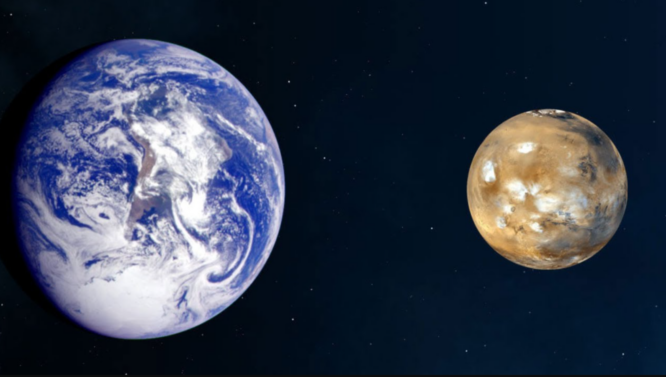Mars meteorites account for 188 of Earth’s thousands. Did they arrive how?
Over the Solar System’s turbulent history, asteroids have slammed with Mars with such intensity that the debris was ejected into space and drifted until it entered the Earth’s atmosphere and survived the fall.
Astronomers assumed only the strongest impacts could launch pebbles from Mars into space. New research suggests it requires less pressure than previously thought, meaning more Mars pieces may be floating in orbit and heading to Earth.
Caltech planetary scientists simulated a Mars impact with a powerful blast cannon. They chose Earth rocks with plagioclase, a prominent component of Martian rocks, to avoid damaging the few Mars meteorites.

Asteroid impacts turn plagioclase into maskelynite. Researchers claim maskelynite in rocks indicates pressure.
“We’re not on Mars, so we can’t watch a meteorite strike in person,” explains JPL planetary scientist Yang Liu, a research co-author. We can replicate a comparable impact in the lab. We discovered that launching a Mars meteorite requires less pressure than we believed.”
Previous experiments by Liu and Caltech professor Paul Asimow showed that plagioclase turns into maskelynite at a shock pressure of 30 gigapascals (GPa), 300,000 times the atmospheric pressure at sea level or 1,000 times the pressure a submersible encounters while diving beneath 3 kilometers of ocean water.

This new investigation with the better blast cannon demonstrated that the transition occurs at roughly 20 GPa, a substantial change from prior tests.
“It has been a significant challenge to model an impact that can launch intact rocks from Mars while shocking them to 30 GPa,” Asimow stated in a press statement.
“The gap between 30 and 20 GPa is substantial. The more correctly we can measure a meteorite’s shock pressures, the more probable we can pinpoint its Mars impact crater.”
This study follows last year’s discovery that Mars’ “Black Beauty” meteorite (shown above) came from an impact crater in Terra Cimmeria – Sirenum.
What proves these meteorites are from Mars? Mars meteorites contain trapped gas that fits mission data.
In 1976, two NASA Viking spacecraft arrived on Mars and studied the sparse Martian atmosphere’s gases. In 1983, shock glass veins and pockets in Elephant Moraine 79001 and other meteorites contained such gases.

